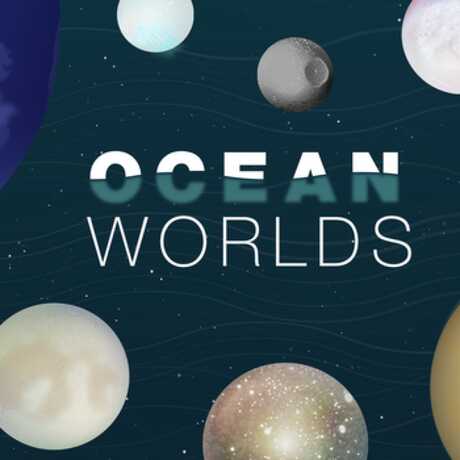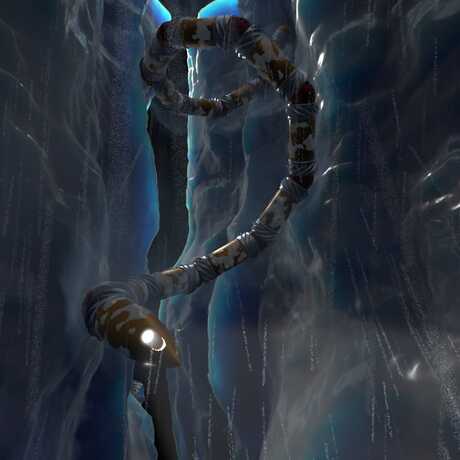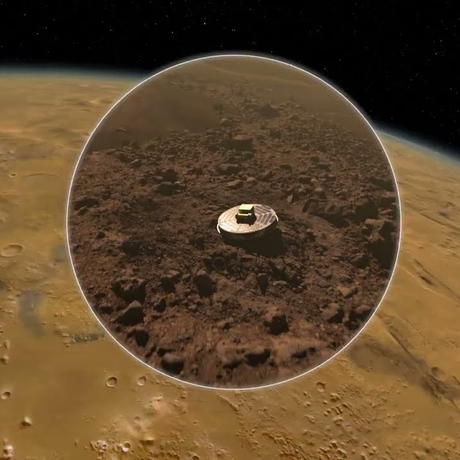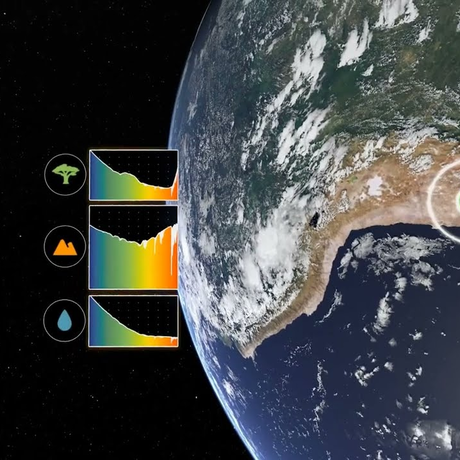
With evidence of a world-spanning subsurface ocean of liquid water and the suggestion of possible deep-sea hydrothermal vents, Enceladus, the sixth-largest of Saturn’s 82 moons, is an intriguing contender for a living world. Scientists have designed a concept for a flexible robot called Exobiology Extant Life Surveyor (EELS) that could navigate through Enceladus’s miles-thick ice layer to find aquatic life.
About the Video Clip
Duration: 3 minutes
Grade Level: Best for grades 5+
With evidence of a world-spanning subsurface ocean of liquid water and the suggestion of possible deep-sea hydrothermal vents, Enceladus, the sixth-largest of Saturn’s 82 moons, is an intriguing contender for a living world. Scientists have designed a concept for a flexible robot called Exobiology Extant Life Surveyor (EELS) that could navigate through Enceladus’s miles-thick ice layer to find aquatic life.
Guiding Questions for Classroom Discussion
- How does Saturn itself influence this tiny moon?
- What geological features are Enceladus known for, based on evidence collected thus far? Describe at least one feature which is similar to what we'd find on Earth, and one which is quite different than that on our home world.
- What material does the spacecraft shown in the video aim to test? What does it hope to detect in this material?
- What is one noted difference between Earth and Enceladus that distinguishes how scientists go about searching for signs of life in each place?
Activity Package: Ocean Worlds

Browse through an online bundle which showcases NASA's resources for those interested in learning more about ocean worlds. It includes activities that can be done at home as well as videos, animations, stories, and articles.
Exploring Ocean Worlds with an EELS Robot

In this public talk by Kalind Carpenter and Morgan Cable, Principal Investigator and Science Lead, respectively, for JPL's Exobiology Extant Life Surveyor (EELS), you'll be introduced to the project, why Enceladus was chosen as the moon to visit, what Cassini's detected previously, and what EELS robot could do on Enceladus to advance the field of astrobiology. We'll fast-forward to minute 4:50 to start; the summary slide is at minute 56:00.
Recommended Reading
Enceladus In Depth
An easy-to-digest summary of this tiny moon, including a 3D model.
The Science Behind the Cassini Mission
For decades, scientists didn’t know why Enceladus was the brightest world in the solar system, or how it related to Saturn’s E ring. Cassini found that both the fresh coating on its surface, and icy material in the E ring originate from vents connected to a global subsurface saltwater ocean that might host hydrothermal vents.

This production is funded in part by the Gordon and Betty Moore Foundation through Grant GBMF10870 to the Academy.



